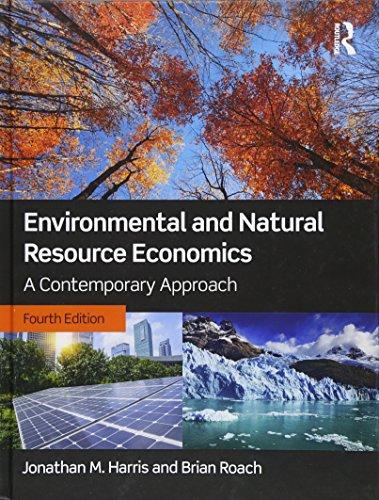Suppose that under the terms of an international agreement, U.S. CO2 emissions are to be reduced by
Question:
Suppose that under the terms of an international agreement, U.S. CO2 emissions are to be reduced by 200 million tons and those of Brazil by 50 million tons.
Here are the policy options that the United States and Brazil have to reduce their emissions:
United States:
Total Emissions Reduction Policy Options (million tons carbon) Cost ($ billion)
A: Efficient machinery 60 12 B: Reforestation 40 20 C: Replace coal-fueled power plants 120 30
a) Which policies are most efficient for each country in meeting their reduction targets?
How much will be reduced using each option, at what cost, if the two countries must operate independently? Assume that any of the policy options can be partially implemented at a constant marginal cost. For example, the United States could choose to reduce carbon emissions with efficient machinery by 10 million tons at a cost of $2 billion. (Hint: start by calculating the average cost of carbon reduction in dollars per ton for each of the six policies).
b) Suppose a market of transferable permits allows the United States and Brazil to trade permits to emit CO2 . Who has an interest in buying permits? Who has an interest in selling permits? What agreement can be reached between the United States and Brazil so that they can meet the overall emissions reduction target of 250 million tons at the least cost? Can you estimate a range for the price of a permit to emit one ton of carbon?
(Hint: use your average cost calculations from the first part of the question.)
Step by Step Answer:

Environmental And Natural Resource Economics A Contemporary Approach
ISBN: 9781138659476
4th Edition
Authors: Jonathan M. Harris, Brian Roach






